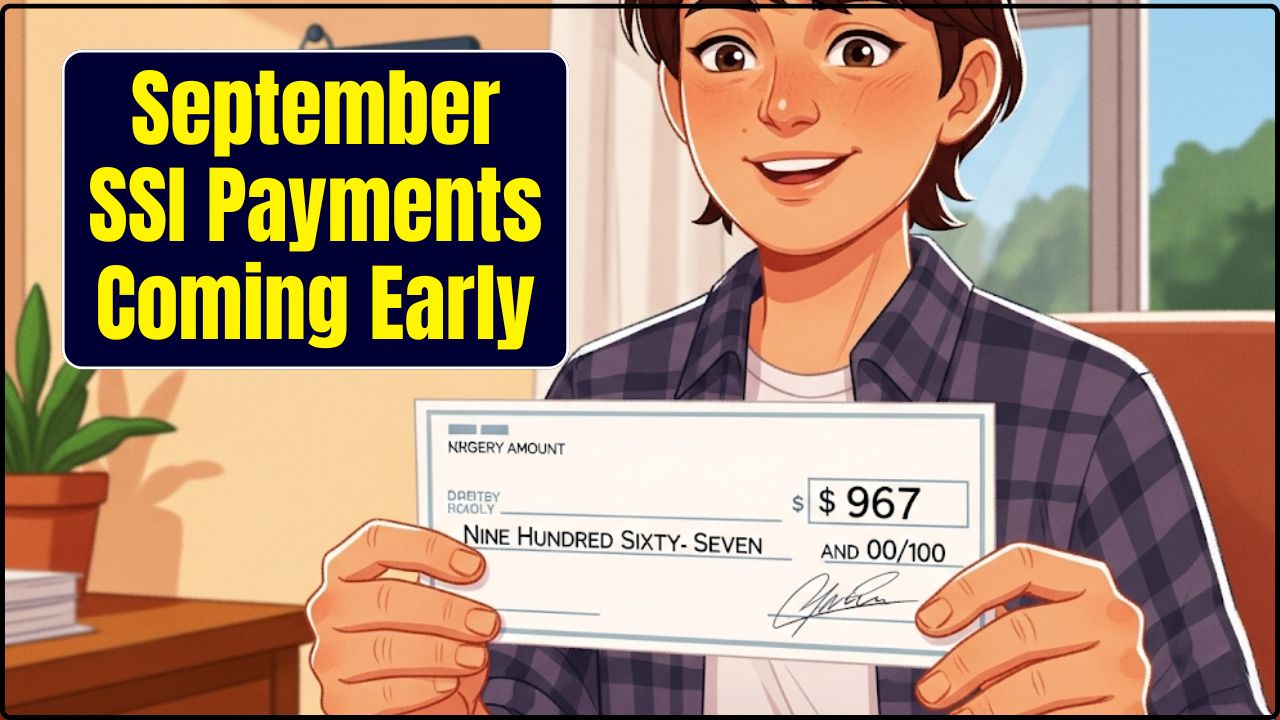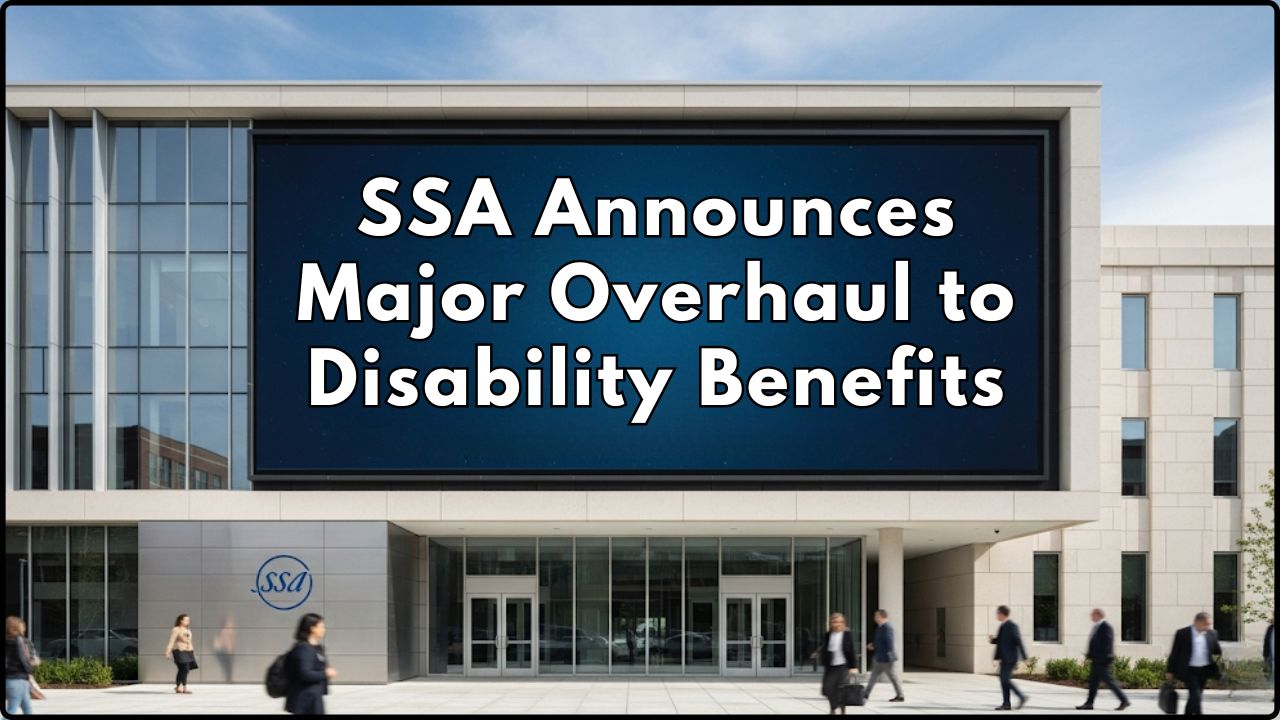Waiting for Social Security Disability Insurance (SSDI) or Supplemental Security Income (SSI) approval can feel like standing in line at the DMV on a Monday — long, slow, and frustrating. On average, disability claims in the U.S. take around 230 days to process — that’s over seven months without income, medical coverage, or certainty.

But here’s the good news: The Social Security Administration (SSA) has just added 13 new medical conditions to its Compassionate Allowances (CAL) program — a fast-track system that can get your benefits approved in weeks instead of months. If you or a loved one has one of these diagnoses, you could skip most of the waiting game.
Social Security Could Speed Up
| Key Point | Details |
|---|---|
| New CAL Conditions Added | 13 new diagnoses (listed below) |
| Total CAL Conditions Now | 300 |
| Average Wait Without CAL | ~230 days |
| With CAL | Often approved in weeks |
| Launched | 2008 |
| Total Helped | Over 1.1 million people |
| Official List | SSA CAL List |
The Compassionate Allowances program is proof that sometimes bureaucracy can work for you. With 13 new conditions added in 2025, thousands more Americans will get help faster — turning months of uncertainty into weeks of relief. If you or someone you know qualifies, don’t wait. Apply today, use the official diagnosis wording, and take advantage of this fast-track lifeline.
What Is the Compassionate Allowances Program?
The Compassionate Allowances (CAL) program is like the express checkout lane at your local grocery store. Launched in 2008, it was designed to speed up disability approvals for people with severe, clearly disabling medical conditions.
When you apply for SSDI or SSI and your diagnosis is on the CAL list, SSA’s system flags your case. Using its Health IT program, SSA can pull medical records directly from participating hospitals and clinics, cutting months off the process.
Since its launch, CAL has helped over 1.1 million Americans get financial and medical support faster.
The 13 New Diagnoses Added in 2025
As of August 11, 2025, these conditions join the CAL list:
- Au-Kline Syndrome
- Bilateral Anophthalmia
- Carey-Fineman-Ziter Syndrome
- Harlequin Ichthyosis – Child
- Hematopoietic Stem Cell Transplantation
- LMNA-related Congenital Muscular Dystrophy
- Progressive Muscular Atrophy
- Pulmonary Amyloidosis – AL Type
- Rasmussen Encephalitis
- Thymic Carcinoma
- Turnpenny-Fry Syndrome
- WHO Grade III Meningiomas
- Zhu-Tokita-Takenouchi-Kim Syndrome
Why This Matters
Adding these conditions means thousands of new applicants will see life-changing benefits sooner. For families, this can mean covering rent, paying for specialized care, or traveling to receive treatment without going into debt.
For example, Thymic Carcinoma is aggressive and rare. Without CAL, an SSDI claim could take eight months. With CAL, approval can happen in five weeks, giving patients faster access to benefits and Medicare.
CAL vs. Standard Disability Process
| Feature | Standard Disability | Compassionate Allowances |
|---|---|---|
| Average Decision Time | ~230 days | Weeks |
| Medical Review | Full case review | Expedited review |
| Likelihood of Hearing | Higher | Much lower |
| Extra Medical Exams | Sometimes required | Often waived |
| Paperwork Load | Full set | Reduced steps |
How to Apply for SSDI or SSI with a CAL Condition
Step 1: Gather Medical Records
Get official documentation of your diagnosis — specialist reports, lab results, and hospital records.
Tip: Ask if your provider participates in SSA’s Health IT program for faster record transfer.
Step 2: Apply
- Online: ssa.gov/applyfordisability
- Phone: 1-800-772-1213
- In person: Use the SSA Office Locator
Step 3: Use Exact CAL Terminology
List the diagnosis exactly as SSA names it on the CAL list — no abbreviations or slang.
Step 4: Follow Up
Check status through my Social Security online account. Even fast-track cases need monitoring.
Common Mistakes to Avoid
- Misspelling the condition name (SSA’s system might miss it).
- Not submitting complete medical records.
- Assuming CAL is “automatic approval” — you must still meet non-medical criteria like income or work credits.
- Waiting too long to apply — you can apply as soon as you have a confirmed diagnosis.
Standard vs. Compassionate Allowance Claims
| Feature | Standard Disability Claim | Compassionate Allowance Claim |
| Processing Time | 3-5 months (or longer) | Weeks (typically) |
| Medical Review | Extensive, detailed review of medical history and evidence | Streamlined, faster review to confirm diagnosis |
| Number of Conditions | All disabling conditions (must meet SSA’s definition) | Over 200 specific, severe conditions on a pre-approved list |
| Appeals | Common, as most initial claims are denied | Very rare, as initial approval rate is extremely high |
If Your Condition Isn’t on the CAL List
- Apply anyway — many non-CAL conditions still qualify.
- Submit strong medical evidence and detailed functional impact statements.
- If denied, appeal — 3 out of 4 applicants who appeal with legal help eventually win approval.
- Check the CAL list yearly — new conditions are added regularly.
Tax & Financial Considerations
- SSDI benefits may be taxable if your income exceeds certain thresholds.
- SSI benefits are not taxable, but come with strict income/asset limits.
- CAL approval doesn’t mean higher payments — it just speeds the timeline.
Real-World Case Study or Mini Example
Sarah, a 45-year-old graphic designer, was recently diagnosed with Amyotrophic Lateral Sclerosis (ALS), a condition on the Compassionate Allowances list. Knowing she would soon be unable to work, she applied for Social Security Disability benefits. Instead of waiting the typical several months, her claim was flagged for the CAL program. Within just six weeks, the SSA reviewed her medical documentation, confirmed her diagnosis, and approved her for benefits, allowing her to focus on her health without the added stress of financial uncertainty.
Quotes from the SSA
“The Compassionate Allowances program allows us to quickly identify people with severe medical conditions and expedite their disability claims,” said Kilolo Kijakazi, Acting Commissioner of Social Security. “These additions to the CAL list will help more people get the support they need, faster.”
Myth vs. Fact
| Myth | Fact |
|---|---|
| CAL means guaranteed approval | You still must meet medical and non-medical criteria |
| Only adults qualify | Many CAL conditions affect children |
| You can only apply online | You can apply by phone or in person too |
| Lawyers are required | Not required, but can help avoid errors |
FAQs
Q1: Can I apply for CAL if I’m still working?
A: Possibly, but SSDI has strict limits on substantial gainful activity income.
Q2: Does CAL affect payment amounts?
A: No — it only speeds up decision time.
Q3: Can children get benefits under CAL?
A: Yes — several CAL conditions apply to minors.
Q4: How often is the CAL list updated?
A: Typically once a year, but sometimes more often.





